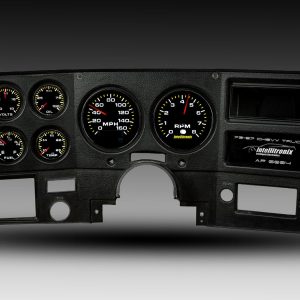Behind the World of Seat Building at Mid America Motorworks
Replacing interior components is not usually that difficult, but interior repair–especially seat repair–requires skills, equipment and training which many enthusiasts may not have acquired. To find out what it takes to make a replacement seat, we went to the Performance Choice division of Mid America Motorworks in Effingham, Illinois.
Performance Choice designs and makes interior components, including seat covers, foam (seat padding), carpets, floor mats, door panels, sun visors and interior accent pieces. Although Corvette, Porsche and air-cooled Volkswagens are its primary markets, Performance Choice also makes seats for a wide range of customs, hot rods and other specialty cars.
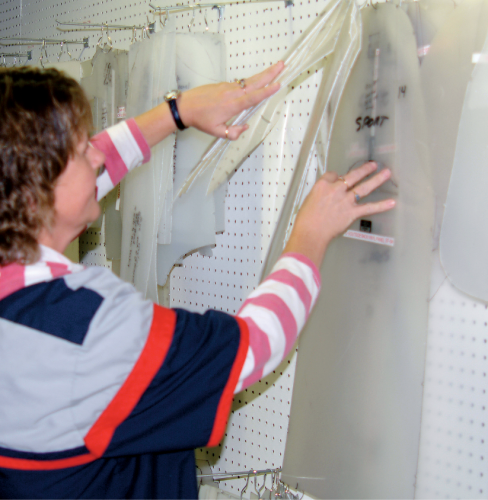
All automotive seats have a seat cover, padding, a frame and spring assembly. Beyond the basic components, seats become more complex with the addition of wiring and electric motors for position control, in-seat heaters and even side-impact airbags. For this article, we are covering just the basics.
From the Pattern
“For a new seat cover, everything starts from the pattern. If we don’t have the pattern, we have to create one,” said Ginger Phipps, interior manufacturing team leader. To create a new seat pattern, Performance Choice carefully cuts apart an original seat. The foam padding is then removed so that it can be duplicated. Other components that might be attached are also removed and identified. Seats are becoming more and more complex in their manufacture, but Performance Choice has not been stumped yet by any new seat design.
“We’ve always been able to figure it out, but it can take several days or more,” Phipps said. “And every year, seats are getting more complex, which means it takes more time to create a pattern. For example, each seat in a C5 Corvette (’97-’04 models) has a total of 110 pieces that must be duplicated when making a replacement seat.” For an authentic replacement cover, Performance Choice must match the OE part in size, shape, material and color. For a restyled seat, Performance Choice may or may not match the OE part, depending upon the desired look, but everything starts from the OE pieces.
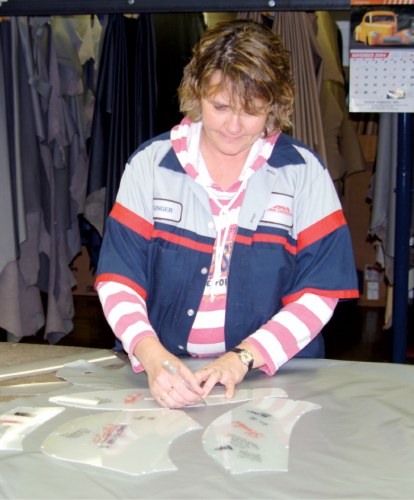
As each piece of seat cover fabric is removed, it is numbered, and its outline is traced onto a sheet of paper. Then the tracings are cut out, and each piece is arranged on a large sheet of vinyl (or leather) in a manner to minimize waste. Achieving the best fit for all the pieces is like working on a giant jigsaw puzzle. In the old days layouts were recorded, and the individual paper templates were used to make matching plastic shapes, which could be reused many times. Now, for vinyl seats, the best-fit pattern is digitized, and that image is used by a computer-controlled cutter to automatically cut out each piece. “Vinyl has a consistent color and pattern, so we use automated cutting,” said Jason Flach, the manager of production operations. “But leather isn’t consistent. On leather we still do layout and cut by hand to avoid including any imperfections in the cut piece.”
After the individual vinyl or leather pieces are cut from the pattern, the pieces are sewn together to make the seat cover. “Depending upon the complexity of the seat and the type of material used, it takes us two to six man-hours to cut and sew a seat cover,” Phipps said. Several quality control checks are made during the process. After the final assembly and inspection, the seat cover is ready for installation.
Got Foam?
On a newer car–say, one that is less than five years old–the original seat foam can probably be reused. For older cars, new foam is recommended because foam deteriorates due to exposure and use. As foam wears out, it loses its ability to provide support. Installing new seat covers over deteriorated foam makes about as much sense as installing chrome valve covers on an engine with a bad rod knock. Making the new foam is a two-step process. First, iso-cyanate and a resin are mixed together, and then the mixture is poured into a custom mold made for each seat style. In the mold, the liquid mixture converts to foam, swelling and filling the mold to create a seat pad that matches the shape of the mold. Mixing the compound and designing the mold can be a trial-and-error process.
“The hardness of the foam is determined by the ratio of the chemicals in the mixture and the curing time. We test different mixtures and different curing times until we get it right,” Phipps said. Weather conditions also influence foam. Performance Choice adjusts its processes when there is a significant swing in either temperature or humidity. After the chemicals are combined, the mixture is blended together before being poured into the mold.
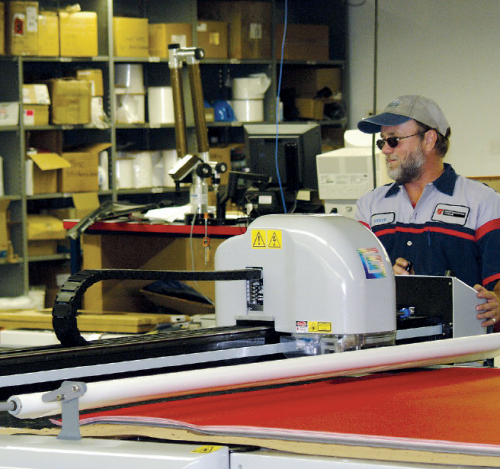
“You have only a few seconds from combining the chemicals to pouring. If you don’t move fast, the foam starts setting up in the mixing container,” Phipps said. Even pouring the mixture into the mold requires testing to get it right. With a complicated foam pattern, the mixture may have to be poured at a specific point to spread properly. On some seats, the springs are not attached directly to the frame, but are embedded within the foam. When making these seats, Performance Choice suspends the springs, using magnets, inside the mold. The foam must not only fill the mold, but also properly enclose the springs.
A foam mold is a hinged, two-part, fiberglass pattern supported by a rigid metal frame. The pattern is designed to allow the mixture to flow and expand to the proper thickness. The surfaces of the mold are coated with a release agent to prevent the pad from sticking. As soon as the mixture is poured, the mold is closed and locked.
During curing, the mixture expands to many times its original volume as it converts to foam. To handle this expansion, numerous vent holes are built into the mold. If there are not enough vent holes, or the holes are not correctly placed, two things can happen. One is bad, and the other is a disaster. The bad thing occurs when the foam doesn’t expand properly and doesn’t completely fill the pattern. The disaster occurs when the foam expands and has no place to go. The equipment operator must immediately unlock the mold to relieve the pressure. If the mold isn’t unlocked in time, the pressure of the expanding foam can destroy the mold or even bend the metal frame.
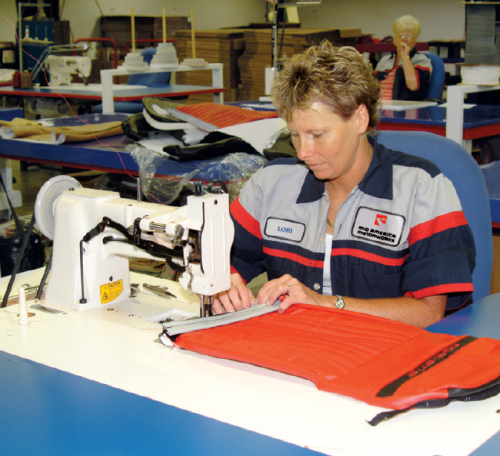
After pouring, the mold is locked for up to eight minutes to allow the foam to cure. Then the mold is opened and the padding is removed. Although foam and seat covers can be installed with the frame in the car, Performance Choice recommends removing the seat and working outside the car. The time needed to remove and reinstall the seat can be more than made up for by the time saved doing the work on a workbench, and better quality control can also be exercised.
If the springs are on the frame instead of inside the foam, Performance Choice covers the springs with a layer of burlap. If a spring ever breaks, the burlap helps prevent the spring (and the foam) from poking through the seat cover. The foam padding is then attached to the frame and secured with new fasteners, and the new seat cover is installed and attached over the foam. The renewed seat is then ready for installation or shipped to the customer. And you thought those bright new seats just magically happened.
Article Sources
Mid America Motorworks
217/540-4259
#1 Mid America Place P.O. Box 1368 Effingham, IL 62401














